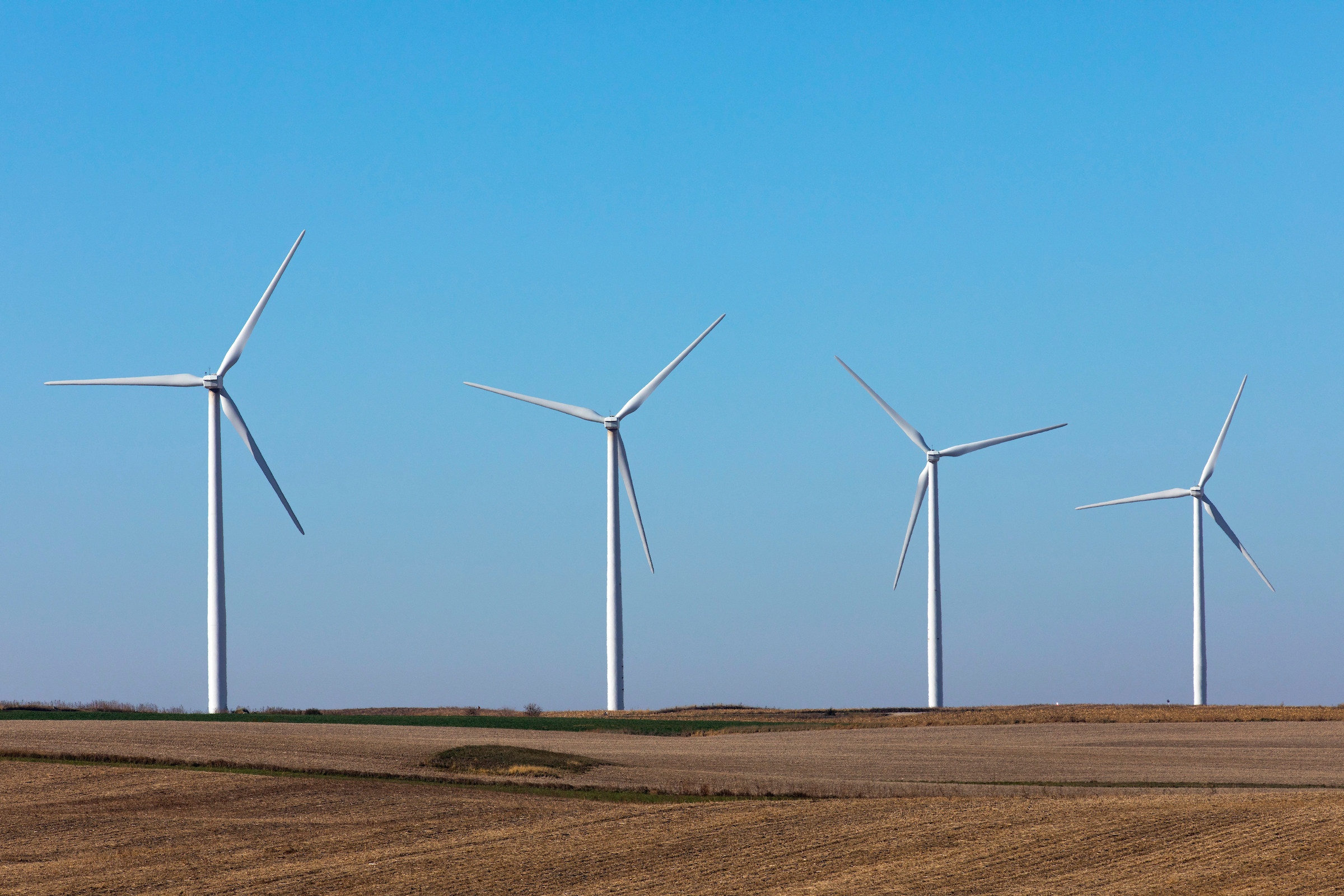
A turbine farm harvests electricity north of Ames this fall. An Iowa State engineer says new transmission lines that cross the country’s major grids could be a boost to Iowa’s wind-energy industry. Larger photo. Photo by Christopher Gannon.
AMES, Iowa – Countries around the world are well ahead of the United States in planning and building “macro grids” capable of moving electricity from one grid or distant geographic region to another, according to a new report authored by an Iowa State University engineer and a former doctoral student.
The report found, for example, that since 2014 China has built or planned 260 gigawatts of high-capacity interregional transmission, Europe 44 gigawatts, South America 22 gigawatts and India 12 gigawatts. Canada has developed or planned 4 gigawatts, and the U.S. 3 gigawatts.
“The United States is way, way behind,” said James McCalley, a report co-author, an Anson Marston Distinguished Professor in Engineering and the Jack London Chair in Power Systems Engineering at Iowa State. “That’s the key finding.”
McCalley authored the report with Qian Zhang, who earned a 2020 doctoral degree in electrical engineering from Iowa State. McCalley and Zhang have been part of a $1.5 million study supported by the U.S. Department of Energy that explored ways to connect the United States’ two major electric grids and share as much as 30,000 gigawatts of electricity across them.






